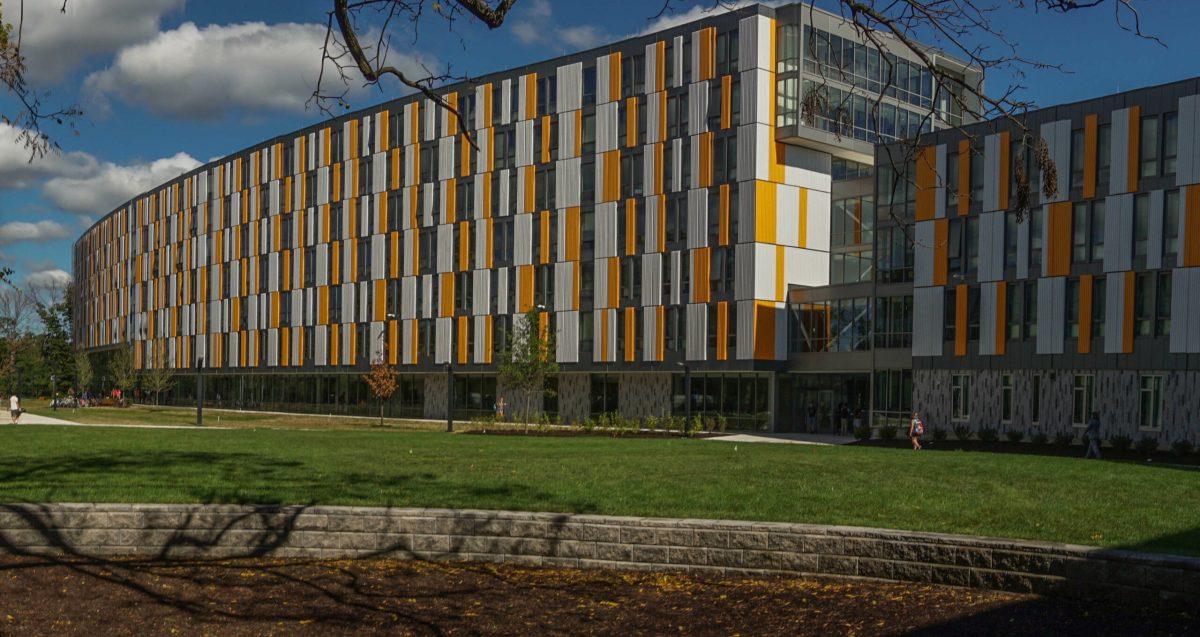On Saturday afternoon, Rowan students received an email detailing an assault at Holly Pointe Commons early Thursday morning. The incident occurred at approximately 4:30 Thursday morning as a female student was fondled by someone she described as an “intoxicated short black male.”
The female student encountered the male sleeping in a restroom, and as he awoke he followed her back to her room uninvited and attempted to enter her room.
While in the hallway, he slapped her lower back and grabbed a “private area.” He then exposed himself and threatened to sexually assault her. Thankfully, she was able to enter her room and avoid the assailant with the assistance of her roommate.
The incident that occurred Thursday is, unfortunately, an example of the growing rate of sexual offenses that are currently happening at the university.
According to Rowan’s annual security and fire safety report, while the overall crime rate has dropped 24% between 2016 and 2018, sexual offenses, such as rape and fondling, have been steadily rising over the years with other offenses, such as stalking, following suit.
Over the three year period, rape has increased around 75% and fondling has expontionally increased 120%. The steady rise with these sexual offenses has largely been attributed to two major factors: the student population increasing, and students coming forward to authorities.

“The [student] population has been rising for over five years,” Rowan’s Senior Director of Public Safety, Reed Layton said. “Because of that, those sort of crimes would certainly rise as well.”
“Furthermore,” Layton continued. “With the rise of the whole #MeToo movement, a whole lot more students are coming forward. Which helps us out in both tracking these crimes, as well as tackling the problem head on.”
Along with both rape and fondling, stalking steadily increased for five years as well. With a total 211% increase between 2016 and 2018. Layton explained that younger students are largely affected by these crimes, with many of the perpetrators being inebriated as they commit these crimes.

“The largest group that is affected by some of these crimes are more likely younger students,” Layton said. “Freshmen in particular. The reason being is that many of them are away from home for the first time and don’t know anyone. More often than not, those who commit those sorts of crimes are often intoxicated with either drugs or alcohol.”
Educating younger students, according to Layton, is imperative for their safety at Rowan. Spreading awareness and coming forward could help mediate the rise in sexual offenses.
“The reason why our overall crime rate is down 24%,” Layton explained. “Is because we have a community awareness program, a large police presence, and a successful student report program. If we use those tools to combat that problem, we’ll be able to reduce the rate of these sexual offenses.”
For comments/questions about this story, email [email protected] or tweet @TheWhitOnline.
























































































































































!["Working with [Dr. Lynch] is always a learning experience for me. She is a treasure,” said Thomas. - Staff Writer / Kacie Scibilia](https://thewhitonline.com/wp-content/uploads/2025/04/choir-1-1200x694.jpg)















































Steven • Oct 2, 2019 at 11:37 pm
Glad to see that the rapidly increasing student population and the fact that more students have started to feel comfortable reporting were mentioned in the article. I’d definitely be interested in seeing how the number of sexual offenses per student compare over the years, since I think that helps put things into perspective as well. Regardless, hopefully Rowan is working hard to develop initiates aimed at reducing overall sex crimes, since even one incident is too many.